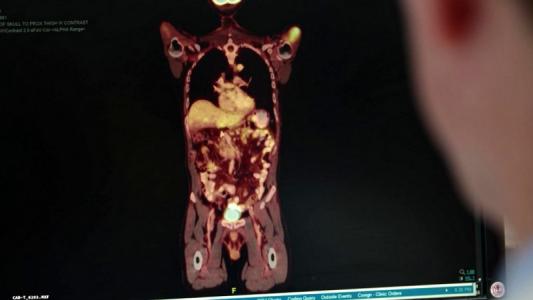I recently had chance to attend the first-ever United Nations high-level meeting on tuberculosis. It was an historic opportunity for heads of state to acknowledge the enormous burden of tuberculosis (TB), the world’s leading infectious killer, and to show their commitment to eradicating it by 2030.
When given the opportunity to intervene from the floor at the meeting, I pointed out that the biggest problem is not money or science but a lack of ambition.
The 2014-2016 Ebola outbreak in West Africa, for example, caused an estimated 11,000 deaths and yet it resulted in a phenomenal amount of innovation around Ebola — including a brand new vaccine and new, rapid diagnostic tests. These innovations were rapidly deployed during the recent Ebola outbreak in the Democratic Republic of the Congo (DRC).
During the same two-year period, TB killed more than three million people. And yet we are still using a TB vaccine that dates back to the 1920s.
The front-line diagnostic tool for TB dates back to German bacteriologist Robert Koch who identified the TB bacteria under a microscope in 1882.
Patients with drug-resistant TB have to endure a prolonged (up to two years) and toxic treatment with multiple drugs (more than 14,000 pills) — including painful daily injections that can make people deaf.
The fact that we are still using century-old tools to tackle the biggest killer infection betrays a complete lack of ambition. So, before we can eliminate TB, we must end our lack of ambition. Only when we become more ambitious will our heads of state come around, rally and support us.
A realistic dream
A modern TB care system will include a much better TB vaccine, and recent trials show great promise for new vaccine candidates.
For those who develop TB symptoms, we will offer a rapid, simple triage test. Those with positive triage test results will get a point-of-care molecular diagnosis, followed by confirmatory drug-resistance testing using sequencing.
People diagnosed with TB will receive a short four-month course of oral medicines. Such short regimens are currently in trials with promising early results. In fact, shorter treatments for latent TB infection are already available.
Patients will have access to digital technologies that can help them stick to their treatment plan and allow them to make money transfers.
A modern TB service will be free of paper. And, thanks to cloud-based information and communication technologies, TB program staff will be able to monitor the epidemic locally and nationally, as well as offering patients the personalized care and support they need.
Is this modern TB service an unrealistic dream? I don’t think so, because many such tools and solutions already exist, in some form or fashion. They have just failed to come to together to serve those who need them the most. And, for some tools such as a better vaccine and a shorter drug therapy, new investments are urgently needed.
Yes, developing new tools is going to cost money — an additional US$1.3 billion per year. But if the global health community can find a way to fight Ebola with modern tools and technologies, I see no reason for the TB field to be unambitious.
We need to “science the shit” out of TB and this is possible if we make the investments. If each country spends 0.1 per cent of its annual gross domestic expenditure on research and development (GERD) on TB research, the funding gap can be bridged.
Poor quality care kills TB patients
TB care is more than just new tools. We also need to improve the quality of care that we give to persons with TB.
Last month, The Lancet Global Health published a landmark report entitled “High quality health systems in the Sustainable Development Goals era: Time for a revolution.” The authors assert that providing health services without guaranteeing a minimum level of quality is ineffective, wasteful and unethical.
Throughout the report, TB is used as a key example — to illustrate the need to go beyond coverage and focus on quality of care. The authors estimate that half of the annual 946,003 global TB deaths that are amendable to health care occur due to poor quality care. The remaining 476,047 deaths are due to not using health-care services.
As highlighted in this report and in our own work on this topic, studies show large gaps in care across types of TB and countries. Analyses show long, complex pathways to health care — with private or informal sectors being the preferred first point of contact, and an evident lack of adequate services at the primary care level.
Simulated patient studies, using a methodology developed by our team, in four countries (India, Kenya, China and South Africa) show poor quality of care in both public and private sectors, with the private sector faring worse.
TB patients suffer high costs and long wait times while seeking care and receiving treatment.
As I have argued earlier, the field urgently needs to develop new tools, as well as adopt and implement the science of quality improvement. The TB community must think beyond coverage and demand high quality care for all patients in all countries.
More importantly, we need to reinvent the way we are managing TB, and, as medical anthropologist and physician Paul Farmer put it, we must overcome our collective failures of the imagination.![]()
Madhukar Pai is the Director of Global Health and a Professor at McGill University. This article was originally published at The Conversation.





